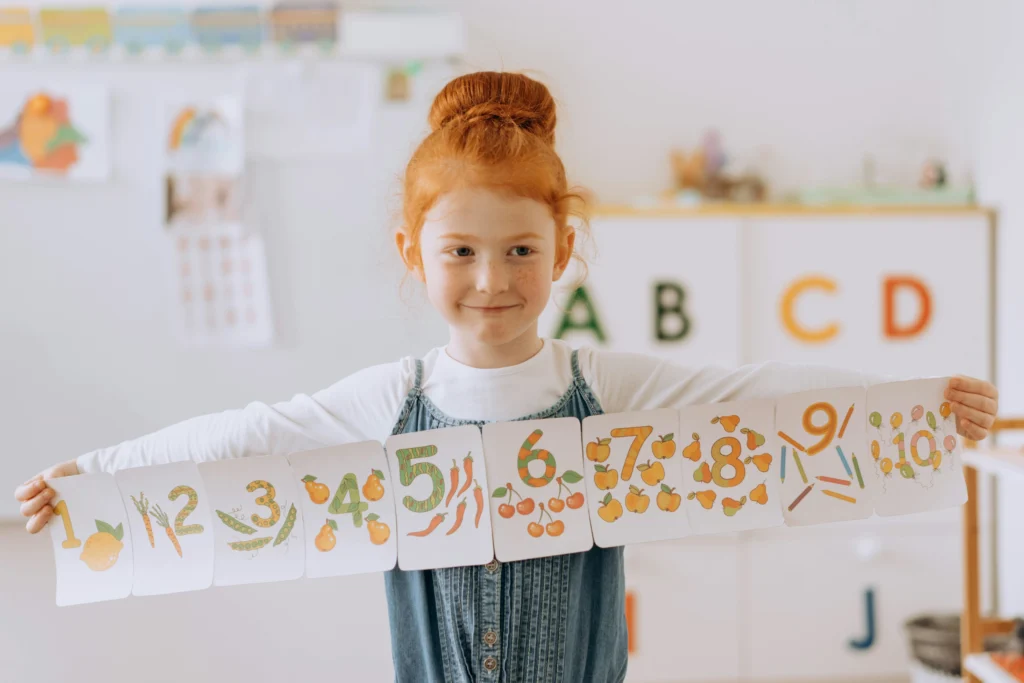Children’s stories are more than just entertaining tales. They play a pivotal role in developing a child’s cognitive skills, moral compass, and creativity. One such story, “The Thirsty Crow,” has been a beloved fable passed down through generations, imparting crucial life lessons engagingly and memorably. Children can learn the importance of resourcefulness, perseverance, and problem-solving through simple narratives and relatable characters.
In this blog, we will explore the popular story of “The Thirsty Crow” in-depth, provide real-life examples of how to present it to children, and offer worksheets to reinforce the lessons learned from the story. Additionally, we will include a comprehensive FAQ section to answer common queries parents, educators, and storytellers may have.
The Story of “The Thirsty Crow”
On a hot summer afternoon, a thirsty crow flew over a village in search of water. The scorching sun blazed in the sky, and the heat was unbearable. The poor crow’s throat was parched, and it felt weak from its long journey. It had been hours since it last had a drink, and it desperately needed water to quench its thirst.
As it flew over the village, the crow’s sharp eyes scanned the surroundings for any sign of water. It saw dry wells, dusty roads, and withering plants, but no water. Just as the crow was about to give up and fly to another place, it spotted something glistening in the sunlight.
Below, near a cluster of houses, stood a pitcher. Excited, the crow flew down and perched on the rim of the pitcher. To its relief, there was water inside! But its happiness quickly turned to disappointment. The water was at the bottom of the pitcher, far too low for the crow to reach with its beak.
The crow tilted the pitcher, hoping to spill some water out, but the pitcher was too heavy to budge. For a moment, it felt hopeless and thought about leaving to search for another source of water. However, the crow was determined and decided not to give up.
It sat on the pitcher and began to think. After a while, an idea struck its clever mind. Nearby, the crow noticed a pile of small pebbles. It flew down, picked up one pebble in its beak, and dropped it into the pitcher. The pebble sank to the bottom, and the water level rose slightly. Encouraged, the crow picked up another pebble and dropped it into the pitcher. Then another, and another.
The crow worked tirelessly, picking up pebble after pebble and dropping them into the pitcher. With each pebble, the water level rose higher and higher. The task was not easy, and the crow felt its strength waning, but it refused to give up. It was determined to quench its thirst, no matter how much effort it took.
After some time, the water level rose high enough for the crow to reach it. Overjoyed, the crow dipped its beak into the pitcher and drank the cool, refreshing water. The feeling of relief was beyond words. The crow’s energy was restored, and it felt rejuvenated.
Having quenched its thirst, the crow looked around proudly, knowing that its perseverance and cleverness had saved it from dehydration. It flew away, leaving behind the pitcher, and continued on its journey, feeling stronger and wiser.
Breaking Down the Story: Themes and Lessons
1. Resourcefulness
The crow teaches children the importance of being resourceful in tough situations. Instead of panicking, the crow took a moment to observe the surroundings and came up with a creative solution. This encourages children to think outside the box when faced with challenges.
Example: A child trying to solve a difficult puzzle or math problem can learn from the crow’s behavior. Instead of giving up, they should keep searching for solutions in their environment, whether it’s asking for help, looking for a different approach, or breaking the task into smaller steps.
2. Perseverance
The crow’s determination to keep trying, even when the water seemed out of reach, teaches children the value of perseverance. Success doesn’t come overnight, and persistence can lead to great rewards.
Example: If a child is struggling to learn a new skill, such as riding a bike or reading, they can take inspiration from the crow’s persistence. Repeated effort and practice will eventually lead to improvement and success.
3. Problem-Solving
The crow used critical thinking to solve the problem. It didn’t just give up when the water was out of reach. Instead, it came up with an innovative way to raise the water level using pebbles. This story shows children the value of problem-solving and looking for practical solutions.
Example: A child may face a situation where they must figure out how to finish a school project with limited resources. Like the crow, they can brainstorm different methods and select the one that works best given their situation.
4. Creativity
The crow demonstrated creativity by using the pebbles in a way that no one might have thought of initially. This can encourage children to tap into their own creativity when solving problems or expressing themselves.
Example: When drawing a picture or writing a story, children can be encouraged to use their imagination in ways they might not have considered before, just like the crow’s creative solution to its thirst.

Real-Life Examples of the Story’s Themes
1. Real-Life Perseverance
Consider a child who is learning to play a musical instrument, like the piano. In the beginning, it can be frustrating, and progress seems slow. However, through consistent practice, just like the crow’s repeated efforts to raise the water level, the child eventually gets better and starts to enjoy playing their favorite songs.
2. Creativity in the Classroom
Imagine a student struggling with a group assignment. Instead of relying on traditional methods, the child suggests using digital tools to collaborate remotely, similar to how the crow innovatively used pebbles to solve its problem. This shows how creativity can be applied to solve modern-day challenges, whether in the classroom or at home.
3. Resourcefulness in the Real World
A great example of resourcefulness can be seen in how people adapt to unexpected challenges, such as during a power outage. Just as the crow used pebbles to solve its problem, people use available resources — candles, flashlights, or even smartphones — to adapt to the situation and solve their immediate problems.
How to Tell the Story Effectively to Children
Telling a story to children is an art that involves engaging them through vocal tone, expression, and interaction. Here are some tips for storytelling:
1. Use of Voice and Expression
While narrating “The Thirsty Crow,” make sure to use varied tones to emphasize different parts of the story. For instance, when the crow is thirsty and struggling, use a sad tone. When the crow comes up with the idea to use the pebbles, switch to an excited and happy tone to build suspense and excitement.
2. Acting Out the Story
Children love interactive storytelling. You can use props such as a pitcher and pebbles to physically demonstrate how the crow drops the pebbles into the pitcher. This hands-on approach not only makes the story more engaging but also helps children understand the moral lessons better.
3. Incorporating Questions
After telling the story, ask open-ended questions like:
- “What would you do if you were the crow?”
- “Why do you think the crow didn’t give up?”
- “What can we learn from the crow?”
This invites children to think critically about the story and relate it to their own lives.
Worksheets: Reinforcing the Lessons
Here’s a worksheet you can use to help children reinforce the lessons learned from “The Thirsty Crow.”
Worksheet 1: Understanding the Story
- Fill in the Blanks:
- The crow was searching for ________ on a hot day.
- The crow couldn’t reach the water because it was too ________.
- The crow used ________ to raise the water level in the pitcher.
- Multiple Choice Questions:
- What did the crow use to raise the water level? a) Leaves b) Pebbles c) Sticks d) Grass
- True or False:
- The crow gave up when it couldn’t reach the water. (True/False)
- The crow used its creativity to solve the problem. (True/False)
- Draw the Scene:
- Draw a picture of the crow near the pitcher, trying to drop pebbles into it.
Worksheet 2: Lessons from the Story
- Short Answer:
- What did the crow teach us about problem-solving?
- Matching:
- Match the moral to the correct story:
- Perseverance → ______
- Creativity → ______
- Resourcefulness → ______
- Match the moral to the correct story:
Conclusion
“The Thirsty Crow” is more than just a simple story for children; it is a timeless fable that teaches essential values like perseverance, creativity, and resourcefulness. Through engaging storytelling, children can learn how to face challenges head-on and find solutions, just like the clever crow.
FAQs About “The Thirsty Crow”
Why is “The Thirsty Crow” a popular story for children?
The story is simple, easy to understand, and has a clear moral lesson. It teaches essential life skills such as perseverance, creativity, and problem-solving, which are important for children’s development.
At what age can children understand the story of “The Thirsty Crow”?
Children as young as 3 to 5 years old can grasp the basic concepts of the story. However, older children (6-10 years old) can understand the deeper lessons of persistence and resourcefulness.
How can “The Thirsty Crow” help in developing critical thinking in children?
The story encourages children to think creatively and use available resources to solve problems. It teaches them that even in difficult situations, they can find solutions by being resourceful and persistent.
Can this story be used in a classroom setting?
Yes, this story is perfect for classrooms. Teachers can use it to engage children in discussions about problem-solving, resourcefulness, and perseverance. It can also be used for group activities, role-playing, and creative exercises.
What other stories convey similar lessons?
Other popular stories with similar lessons include- The Ant and the Grasshopper (about hard work and planning for the future), The Tortoise and the Hare (about persistence and the value of steady effort), The Lion and the Mouse (about kindness and the importance of helping others)


